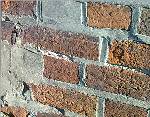
Why Repoint?
Good pointing can transform a building, by reducing levels of damp, preventing erosion, keeping the structure sound and visually improving the building. A well pointed wall looks solid and sound, and the appearance of the stone or brickwork is enhanced.
The mortar between the bricks and stones in old walls will gradually erode over time due to the effects of wind, rain and frost. This allows rain to penetrate the wall and erode the bricks or stone and can lead to dampness problems.
Mortars primarily provide a function of binding masonry together in the construction of walls. The mortar needs to be softer than the masonry to allow the mortar to absorb and give up the water content of the wall rather than allowing the water to travel through the masonry. The result is that mortar becomes sacrificial and the brick or stone is protected. This is what is meant when we talk about walls “breathing”. This helps explain why sand and cement mortars can be inappropriate, if they are harder than the bricks and therefore absorb and shed water at a slower rate than the soft, porous bricks.
Traditional mortars had a high lime content that helped the wall to breathe naturally. In the early and mid 20th C the use of sand and cement became readily available and fashionable. As a result the old lime mortar that provided this sacrificial binding and had become worn, as they were designed to do, were repaired with these new cement based mortars.
Repointing with this higher cement content reduces breathability and is also more brittle. Traditional walls are designed to shed water by breathing but once they have a strong cement pointing they have to shed water through the masonry and the result is excess wear of the masonry rather than the mortar.
The use of these cement mortars is suitable only when the bricks are a hard brick and when the original brickwork was built with sand / cement mortar.
Any building that is built using a lime mortar and soft bricks or stone should be repointed with a lime mortar, that’s why more and more people, with older buildings are returning to lime-based mortars.